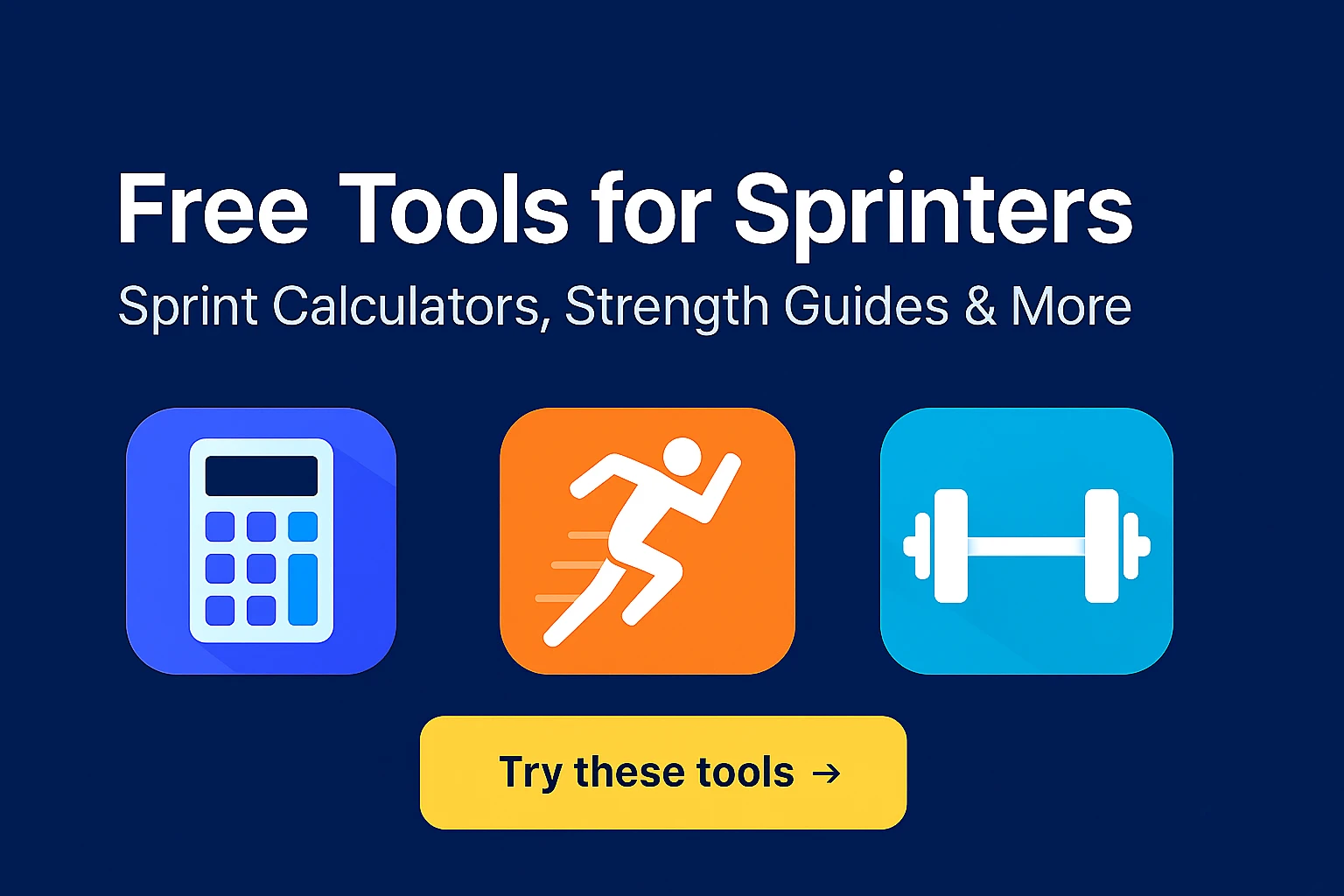Sprint Training 101: Basics, Benefits, and Better Form
Whether you're a beginner or a seasoned athlete, sprinting remains one of the most powerful tools for building explosive strength, cardiovascular endurance, and overall athletic performance. This gui...
Whether you're a beginner or a seasoned athlete, sprinting remains one of the most powerful tools for building explosive strength, cardiovascular endurance, and overall athletic performance. This guide walks you through the basics of sprint training, essential form cues, and how to measure progress effectively.
What Is Sprint Training?
Sprint training is a high-intensity running workout focused on short-distance bursts (typically between 30m to 400m) to develop maximum speed, acceleration, and efficiency. It's a staple for athletes in track and field, football, basketball, and many more sports that require quick bursts of power.
Benefits of Sprint Training
- Explosive Strength: Builds power in the glutes, hamstrings, and calves
- Cardio Efficiency: Improves anaerobic capacity and VO2 max
- Fat Burning: High-intensity workouts stimulate fat loss
- Speed and Agility: Develops fast-twitch muscle fibers and coordination
- Time-Efficient: Great results in less time than traditional cardio
Sprinting Basics: What You Need to Know
Warm-Up Matters
A solid warm-up prepares your muscles, reduces injury risk, and boosts sprint performance. A typical warm-up includes:
- Light jogging or skipping (5 minutes)
- Dynamic stretches (leg swings, arm circles)
- Sprint-specific drills (A-skips, high knees)
Start Position
Your start sets the tone. From a standing or three-point stance:
- Lean forward with your weight on the front foot
- Drive with your arms — opposite arm to leg
- Push explosively off the ground
Sprint Form Fundamentals
- Head & Eyes: Neutral head position, eyes forward
- Arms: Elbows bent at ~90 degrees, drive from shoulders
- Core: Tight and upright posture
- Legs: High knees, dorsiflexed toes, powerful drive phase
- Stride: Avoid overstriding; focus on quick turnover and full extension
Sprint Distances and Their Purpose
| Distance | Purpose |
|---|---|
| 30m | Acceleration and reaction time |
| 60m | Max velocity training |
| 100m | Speed and technique focus |
| 200m+ | Speed endurance |
Common Mistakes and Fixes
- Overstriding: Leads to braking effect — keep feet under hips
- Tensed Upper Body: Relax shoulders and hands to save energy
- Poor Arm Mechanics: Arms drive rhythm; don't let them swing across midline
- Neglecting Rest: Sprints need full recovery for max effort
Top Sprint Drills to Improve Form
- A-Skips – Promote knee lift and rhythm
- B-Skips – Reinforce proper leg extension
- High Knees – Train quick turnover
- Bounding – Boost stride length and coordination
- Wall Drives – Improve acceleration angles
Incorporate these drills 2–3x/week before or after sprint sessions.
Track Your Sprint Progress with SpeedTrackr
If you're serious about getting faster, tracking your progress is essential. This is where SpeedTrackr can be a game-changer.
What Is SpeedTrackr?
SpeedTrackr is an AI-powered sprint performance tracker designed for athletes who want to optimize their training.
Core Features:
- Sprint timing & form breakdown
- AI + MediaPipe form analysis
- Journal entry system for training logs
- Performance visualization with charts
- Season-based tracking & custom date filters
Bonus: AI insights on what to improve based on your sprint data and daily journal.
Try it out 👉 www.speedtrackr.com
Final Thoughts
Sprint training can supercharge your athleticism — but only with good form, discipline, and consistent tracking. Whether you're training for the 100m or just want to get fitter and faster, integrating the right drills and tools like SpeedTrackr can make a noticeable difference.


